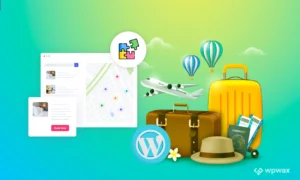Enter e-visas: the digital key to unlocking new horizons with just a few clicks. Gone are the days of tedious paperwork and lengthy embassy visits; today, travelers can secure their passage across international frontiers at lightning speed. But what does this mean for global mobility? Join us as we explore how e-visas are not only simplifying travel but also reshaping economies, enhancing security measures, and fostering cultural exchange like never before. Buckle up for a journey into the future of modern travel that promises to redefine your wanderlust!
The rise of digitalization in the travel industry and the emergence of e-visas as a new form of documentation.
As the world becomes increasingly interconnected, travel has transformed in ways we never imagined. The rise of digitalization within the travel industry is reshaping how we approach global movement. Among the most notable innovations are e-visas—an exciting development that simplifies the often cumbersome process of obtaining travel documentation. With just a few clicks, travelers can now secure their entry into various countries without facing long queues at embassies or dealing with endless paperwork. This seamless transition to electronic visas marks a significant shift in modern mobility and reflects our growing reliance on technology to make life easier and more efficient. Let’s explore this evolving landscape and discover what e-visas truly mean for today’s globetrotters.
What are e-visas? Explanation of what e-visas are and how they differ from traditional visas.
E-visas, or electronic visas, are digital travel documents that allow travelers to enter a foreign country. Unlike traditional visas, which often require lengthy paperwork and in-person visits to embassies or consulates, e-visas streamline the application process.
Applying for an e-visa typically occurs online. Travelers fill out forms and upload necessary documents from their devices. This convenience saves time and effort.
Once approved, the e-visa is sent via email. There’s no need for physical stamps in passports; just show your digital confirmation upon arrival at your destination.
This modern approach reduces administrative burdens on governments while enhancing security measures through advanced tracking systems. By shifting towards e-visas, countries can adapt to increasing global mobility demands without compromising safety protocols.
The benefits of e-visas: Discussing the advantages that e-visas bring to both travelers and governments, such as convenience, cost-saving, and efficiency.
E-visas revolutionize the way travelers approach international trips. Gone are the days of lengthy paperwork and long queues at embassies. With just a few clicks, individuals can secure travel authorization from anywhere in the world.
This convenience is a game-changer for busy professionals and leisure travelers alike. They can plan their journeys without unnecessary delays or stress.
For governments, e-visas offer significant advantages too. Streamlined processing saves time and resources, allowing authorities to focus on enhancing security measures.
Cost savings play a crucial role as well. By reducing administrative overhead linked to traditional visa systems, countries can allocate funds toward tourism promotion or infrastructure improvements.
Moreover, e-visas foster transparency in the application process. Travelers receive clear guidelines about requirements, minimizing confusion and potential rejections that often accompany conventional visas.
Case studies: Sharing examples of countries that have successfully implemented e-visa systems and how
E-visa systems have found success in various countries, showcasing remarkable outcomes that others may wish to emulate. For instance, Australia introduced its eVisitor visa program, allowing travelers from certain nations to apply online for a short stay. The process is smooth and intuitive, resulting in increased tourism and revenue without adding strain on immigration resources.
India has also made significant strides with its e-Visa initiative. This system covers multiple categories including tourist, business, and medical visas. Travelers can fill out applications quickly via their smartphones or computers. As a result, the country experienced a surge in international visitors eager to explore its rich culture.
Another noteworthy example is Kenya’s eVisa platform which simplifies entry into the nation’s stunning landscapes and diverse wildlife experiences. By reducing wait times at borders and streamlining the approval process online, Kenya has enhanced its appeal as a travel destination.
Each of these case studies illustrates how embracing digital solutions like e-visas not only benefits tourists but also strengthens national economies by promoting global mobility while ensuring security measures are maintained effectively. Countries adopting such innovations continue paving the way for an increasingly interconnected world where travel becomes effortless and accessible for everyone involved.
Conclusion
In conclusion, the introduction of e-visas has significantly streamlined global mobility and had a positive impact on modern travel. With faster processing times, easier application processes, and more efficient border control procedures, e-visas have made international travel more accessible and convenient for individuals around the world. However, it is important for governments to continue improving their systems to ensure maximum efficiency and effectiveness in making our world more connected through seamless global mobility. Let us embrace this technological advancement and look forward to a future where international travel becomes even smoother with the continued adoption of e-visa programs.



































